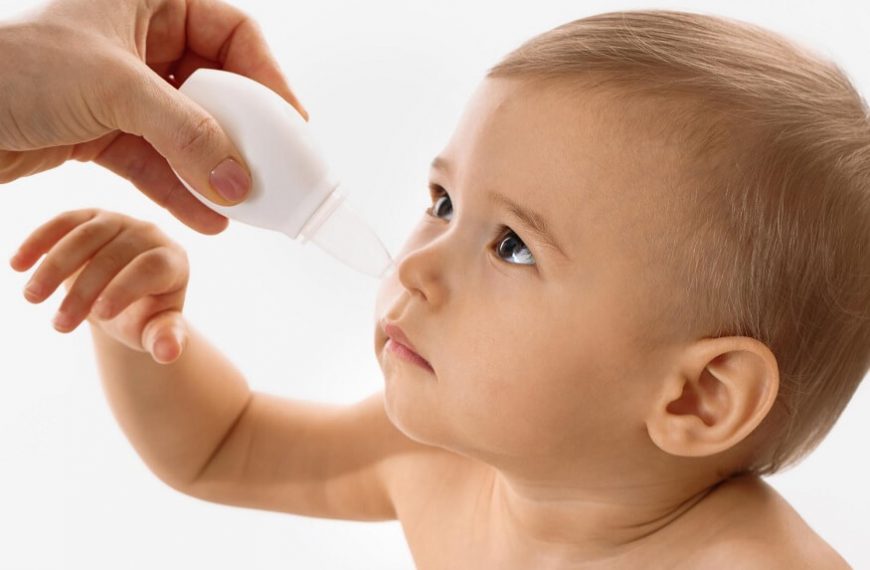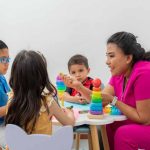Bulb Syringe Usage for Infants
What is a bulb syringe?
Before discussing the need for a bulb syringe, let’s understand what a bulb syringe is. A bulb syringe is a unique tool to remove mucus from a baby’s mouth and nose. It has a rubber bulb connected to a long, thin nozzle. Its main job is to gently suck out mucus from the baby’s nose and mouth. When you squeeze and then release the bulb, it creates suction that helps to remove the mucus effectively.
Importance bulb syringe for infants
Using a bulb syringe to suction your baby’s nose facilitates easier breathing and feeding and improves overall respiratory function. This medical tool removes breast milk, formula, or mucus from the baby’s nasal passages and oral cavity. It can be used when the baby chokes, spits up, experiences nasal congestion, or sneezes. Parents can provide immediate relief and ensure their baby’s comfort and well-being by employing a bulb syringe. Therefore, the use of a bulb syringe in newborns is essential.
Bulb syringe how to use
Now as you know, the use of bulb syringe in newborns. The next question is bulb syringe; how to use it? Follow these steps:
- Squeeze the bulb gently to collapse it.
- Position the nozzle at one side of the baby’s mouth or insert it into one nostril.
- Release the bulb quickly to create suction and draw formula or mucus into the bulb.
- Remove the bulb from the mouth or nostril.
- Squeeze the bulb quickly over a tissue or disposable cloth to expel the collected material.
- Repeat the process for the other side of the mouth or nostril if necessary.
Different types of syringes
Two different types of syringes can be used for infants: the standard bulb syringe and the nasal aspirator bulb syringe.
- The first type of bulb syringe for infants is the standard bulb syringe. It is the most commonly used type. It consists of a bulb-shaped reservoir made of rubber or silicone attached to a narrow nozzle. To use this syringe, you compress the bulb, gently insert the nozzle into the baby’s nose or mouth, and then release the bulb to create suction. It helps to remove mucus or fluids from the baby’s nasal passages or mouth. The standard bulb syringe is versatile and can be used for various purposes, such as clearing nasal congestion, removing excess breast milk or formula, or suctioning out the mucus that may cause discomfort or difficulty breathing.
- The second type of bulb syringe for infants is the nasal aspirator bulb syringe. It is designed for nasal suctioning. It typically has a softer and more flexible bulb than the standard bulb syringe. The gentle suction the nasal aspirator bulb syringe creates helps clear the baby’s nasal passages and relieve nasal congestion. This type of syringe often comes with a detachable nozzle.
Both types of bulb syringe for infants serve the same purpose of suctioning mucus or fluids from a baby’s nose and mouth. However, the nasal aspirator bulb syringe specializes in nasal suctioning and may provide a more gentle suctioning experience, especially for nasal congestion.
How to clean bulb syringe for infants:
Properly cleaning the bulb syringe after each use is essential to prevent the spread of germs and maintain hygiene. While cleaning the inside of the bulb thoroughly is tricky, replacing the bulb syringe after 24 hours is advisable to ensure optimal cleanliness and functionality.
To clean the bulb syringe, follow these steps:
- Begin by placing the tip of the needle in hot soapy water.
- Squeeze the bulb and release it several times while submerged in the soapy water. This action helps to flush out any residual mucus or fluids trapped inside.
- After thoroughly cleaning with soapy water, rinse the bulb syringe by repeating the squeezing and releasing process using clean, hot water. This step ensures that any soap residue is removed.
- After rinsing, allow the bulb syringe to air dry completely before storing it in a clean and dry place.
Regularly cleaning the bulb syringe helps to maintain its effectiveness and prevents the buildup of bacteria or germs. If the bulb syringe becomes visibly dirty or shows signs of damage, it must be replaced promptly to ensure the baby’s safety and hygiene.
Always follow the manufacturer’s instructions and recommendations regarding cleaning and replacing the bulb syringe to ensure your baby’s best care.
Use bulb syringe for infants only if required: (h3)
It is essential to use bulb syringes only when necessary and avoid excessive use. Frequent suctioning with a bulb syringe can lead to irritation, swelling, or even bleeding of the nasal tissues. It is recommended to avoid suctioning immediately after the baby has eaten to prevent potential gagging and vomiting. Instead, allow some time for digestion before using the bulb syringe. Using the bulb syringe judiciously and with caution can minimize the risk of complications and discomfort for your baby. If you have concerns or questions about using a bulb syringe, it is best to consult with a healthcare professional for guidance.
Conclusion
In conclusion, a bulb syringe is a valuable tool for caring for infants, particularly in managing mucus and nasal congestion. Its gentle suctioning helps babies breathe and eat more comfortably, promoting better respiratory function. The different types of syringes are the standard bulb syringe and the nasal aspirator bulb syringe, each designed for specific purposes. Proper cleaning and maintenance of the bulb syringe are crucial to prevent the spread of germs and ensure its effectiveness. However, it is essential to use the bulb syringe only when necessary and avoid excessive use to prevent potential irritation or complications. Always follow the manufacturer’s instructions and consult healthcare professionals for guidance when needed.
At Eurokids, we understand the importance of nasal and oral hygiene. We ensure that you get the best information about different types of syringes. Click here to learn more or to visit a Eurokids center for preschool admission for your child.















